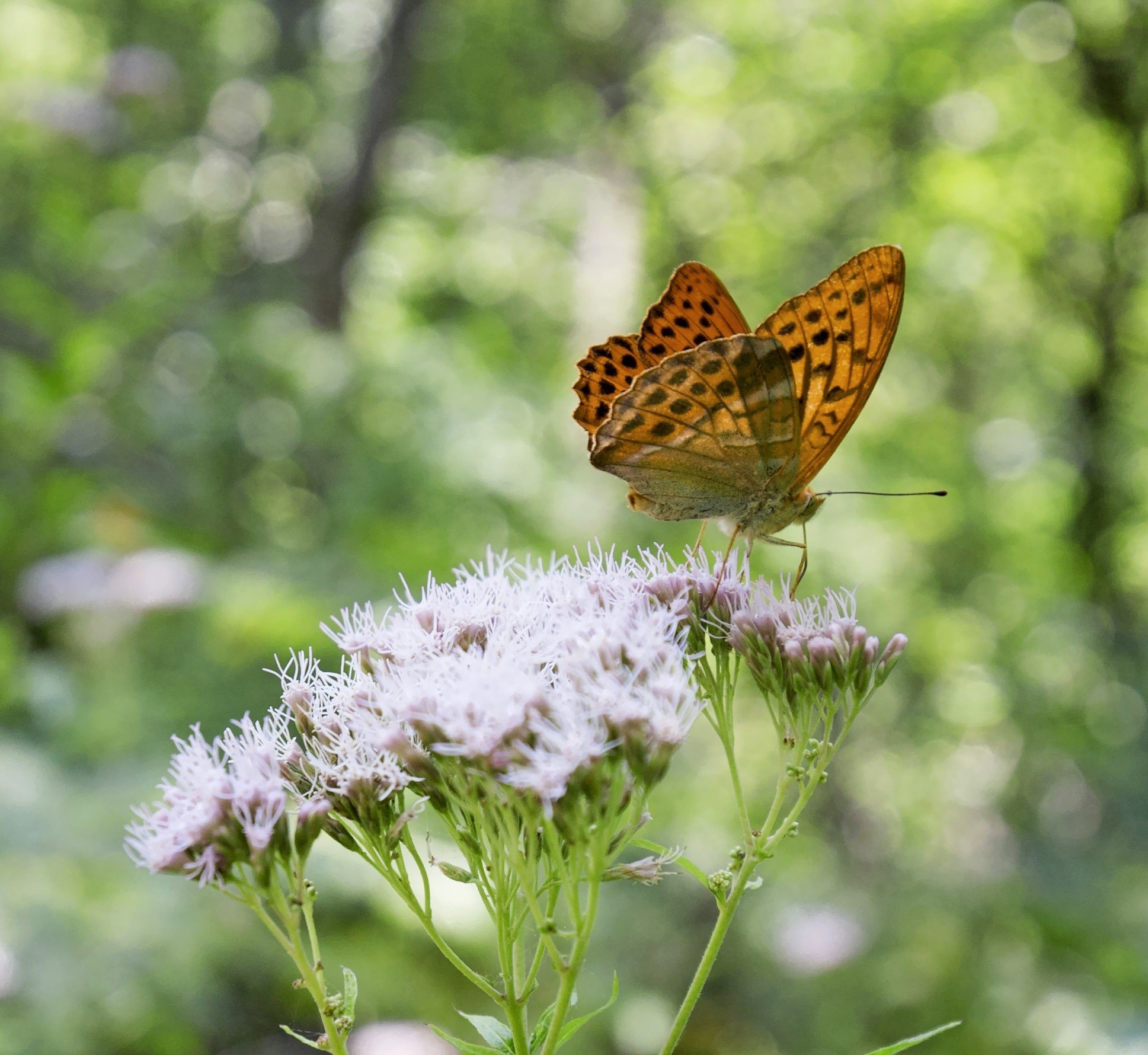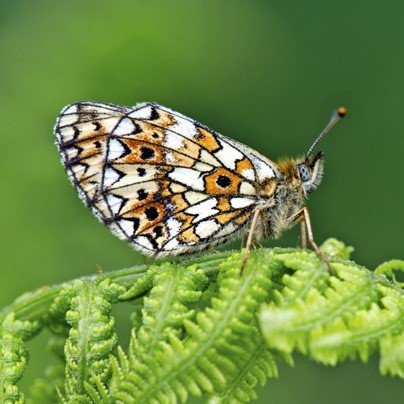SILVER SURFER: The silver-washed fritilary is staging a comeback thanks to sensitively managed woodland.
What other challenge suggests temporarily halting your progress to watch something beautiful? It’s one of the many reasons #walk1000miles is so special – it encourages you to get distracted by wonderful things that make striding your way to a numerical destination infinitely more fulfilling.
Spotting butterflies is one such joyous interruption. The little creatures are as much a mark of summer as picnics, Wimbledon and hosepipe bans. But when you’re on the move, you can easily miss them, as even species as striking as the peacock butterfly can look like dead leaves when their wings are closed.
PAUSE A WHILE: Openings in trees are the best places to see butterflies, like this comma.
Flower-rich meadows are what might immediately come to mind when you think of where to find these flying invertebrates, but forests make excellent breeding habitats for three-quarters of the species found in England.
Openings in the trees – either along tracks or in glades or clearings – are the best places to spot butterflies, as they enjoy the combination of shelter from the surrounding trees, warmth from the sun, and food from scrub, grass and leaf litter. When you see brambles, stop and have a look, because many butterflies feed on these bushes in the summer months.
There are fewer butterflies around today than there were two decades ago, and most species have seen some level of decline, but organisations and conservation groups are working hard to reverse the trend.
Forestry England is protecting and improving habitats across its estate of more than 1500 forests. It’s also paying special attention to species that have become particularly rare. For instance, in Dalby Forest, North Yorkshire, it developed the ideal habitat for the Duke of Burgundy butterfly, which was thought to be extinct in the area. The organisation planned to manually reintroduce the species, but it actually returned of its own accord and numbers have been rising ever since.
Then there’s the chequered skipper, which was extinct from England altogether until Forestry England created the ideal habitat for it at Fineshade Wood in Northamptonshire. It has since been reintroduced and is now breeding successfully.
Conservation efforts are helping some of the more common species too. The speckled wood butterfly, for instance, has increased significantly in number over the past few decades, recolonising in parts of eastern and northern England, while the graceful silver-washed fritillary has also seen a recent resurgence.
Whether you’re after a rare find, or just want to enjoy the undeniably lovely sight of dozens of butterflies fluttering around flowers and bushes, then now’s the best time of year to get to your local woodland and enjoy the view.
On Show: You might find the rare Duke of Burgundy in Dalby Forest.
Forestry England is protecting and improving habitats across its estate of more than 1500 forests. It’s also paying special attention to species that have become particularly rare. For instance, in Dalby Forest, North Yorkshire, it developed the ideal habitat for the Duke of Burgundy butterfly, which was thought to be extinct in the area. The organisation planned to manually reintroduce the species, but it actually returned of its own accord and numbers have been rising ever since.
Then there’s the chequered skipper, which was extinct from England altogether until Forestry England created the ideal habitat for it at Fineshade Wood in Northamptonshire. It has since been reintroduced and is now breeding successfully.
Conservation efforts are helping some of the more common species too. The speckled wood butterfly, for instance, has increased significantly in number over the past few decades, recolonising in parts of eastern and northern England, while the graceful silver-washed fritillary has also seen a recent resurgence.
Whether you’re after a rare find, or just want to enjoy the undeniably lovely sight of dozens of butterflies fluttering around flowers and bushes, then now’s the best time of year to get to your local woodland and enjoy the view.
Try these butterfly trails
HAUGH WOODS, HEREFORDSHIRE Featuring two designated butterfly trails – one 1.5 miles and the other 2 miles – that take you through mixed woodland that’s home to an incredible 600 species of butterfly and moth.
BERNWOOD FOREST, BUCKINGHAMSHIRE Take the 2.5-mile butterfly trail through this peaceful woodland – an important habitat with about 40 species of butterfly.
HALDON FOREST PARK, DEVON Home to a 4-mile butterfly trail (with varied surfaces and steep in places) and to numerous rare species such as the pearl-bordered fritillary.
Five to spot
1.Peacock
One of our most striking and instantly recognisable butterflies, with its bold eyespot patterns. Look for these in woodland clearings, edges and tracks.
2 Purple Emperor
A large butterfly with a magnificent purple sheen, it spends most of its time in the woodland canopy, but does, on occasions, come down to feed on sap. Now found only in southern forests such as Alice Holt Forest in Hampshire.
3 ORANGE-TIP
You may have been enjoying this species for a few months now, as it’s one of the first to emerge in spring. Males are white with orange wing tips, while females have black wing tips. They’re abundant and can be seen in woodland glades.
4 PEARL-BORDERED FRITILLARY
Increasingly rare, it’s bright orange with black markings, and has pearl-like patterns on the underside of its hindwings. It can be found in woodland clearings.
5 COMMA
Spreading north from southern England after a period of rapid decline, it can look like dead leaves when resting thanks to its colouring and scalloped edges.









